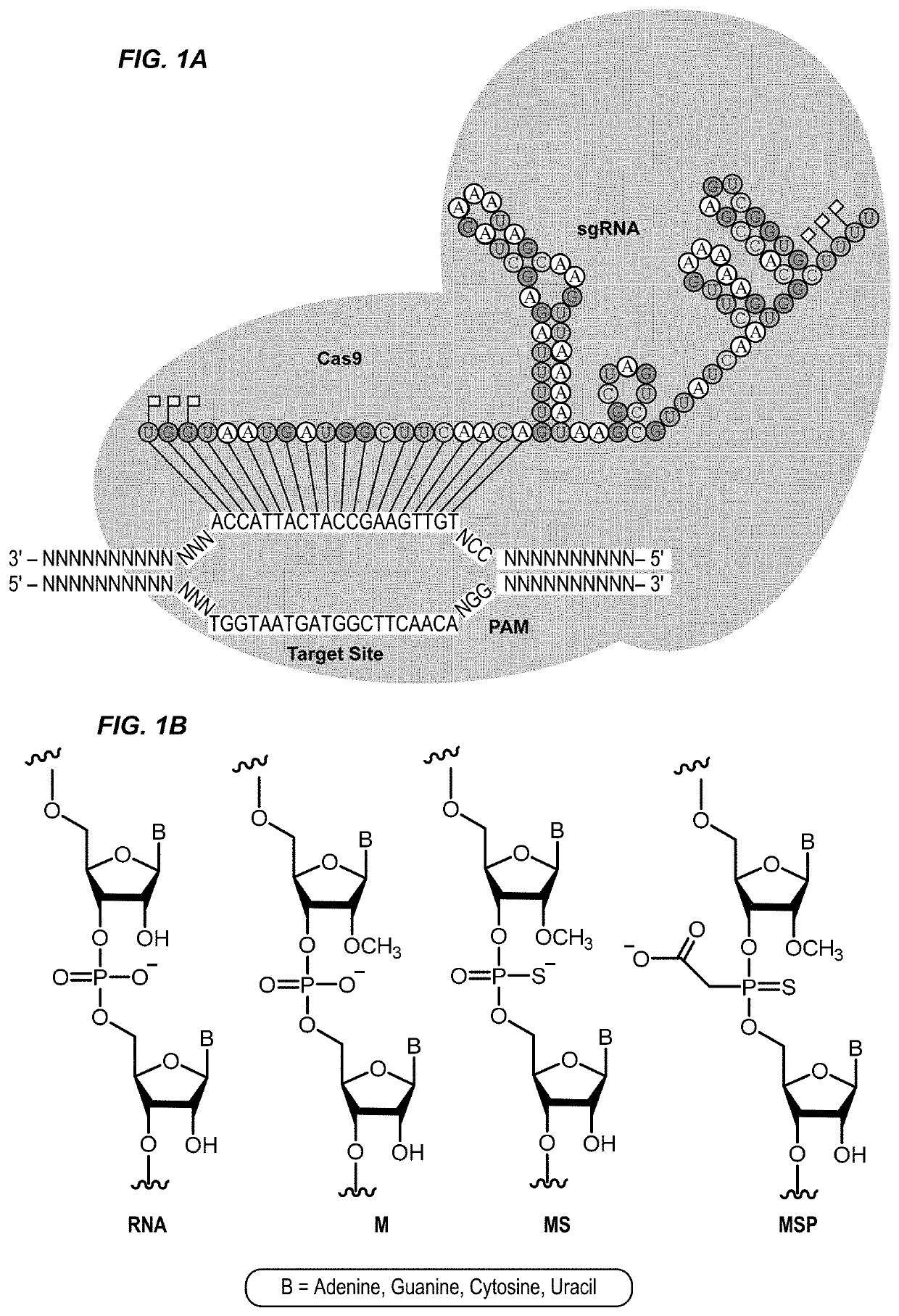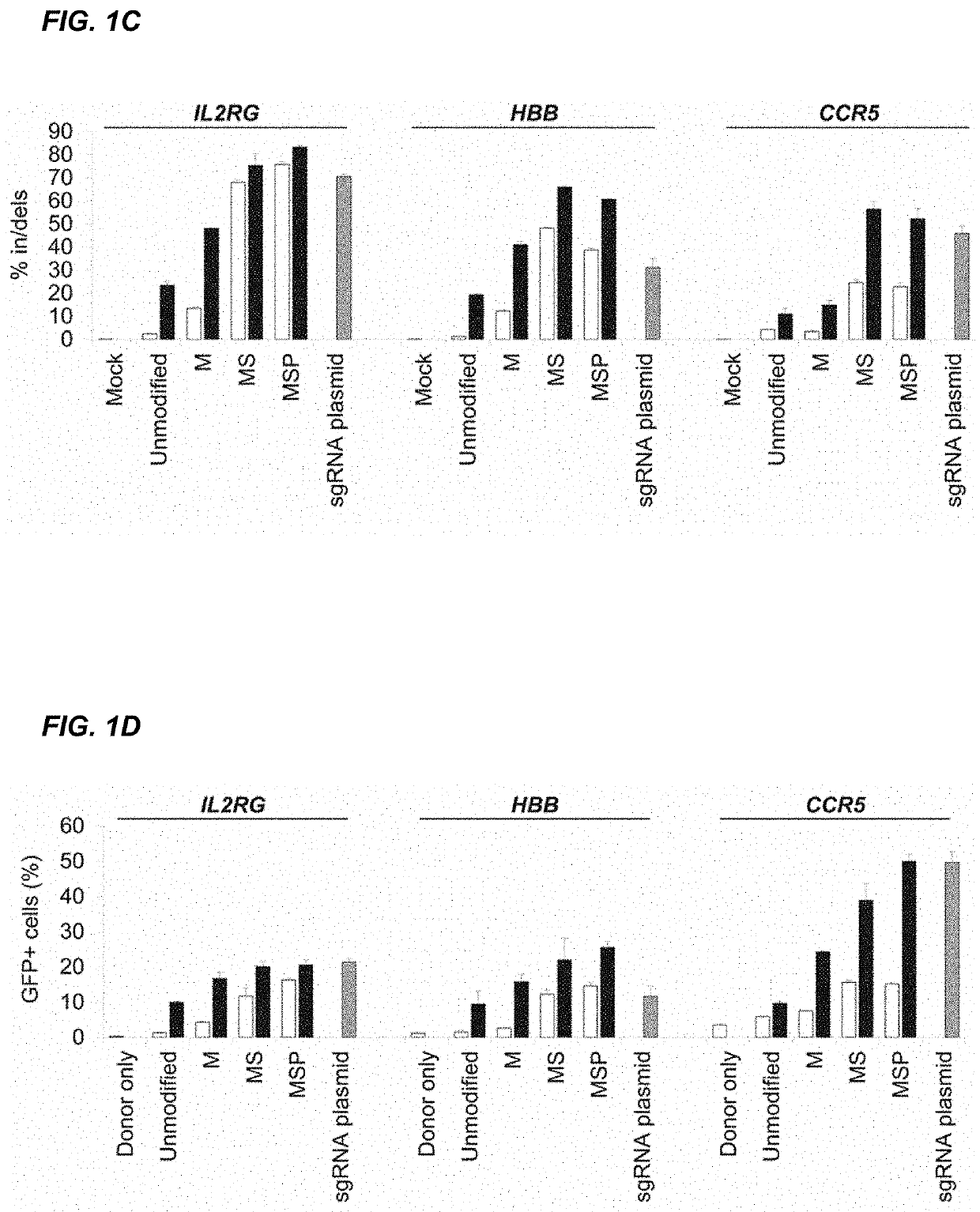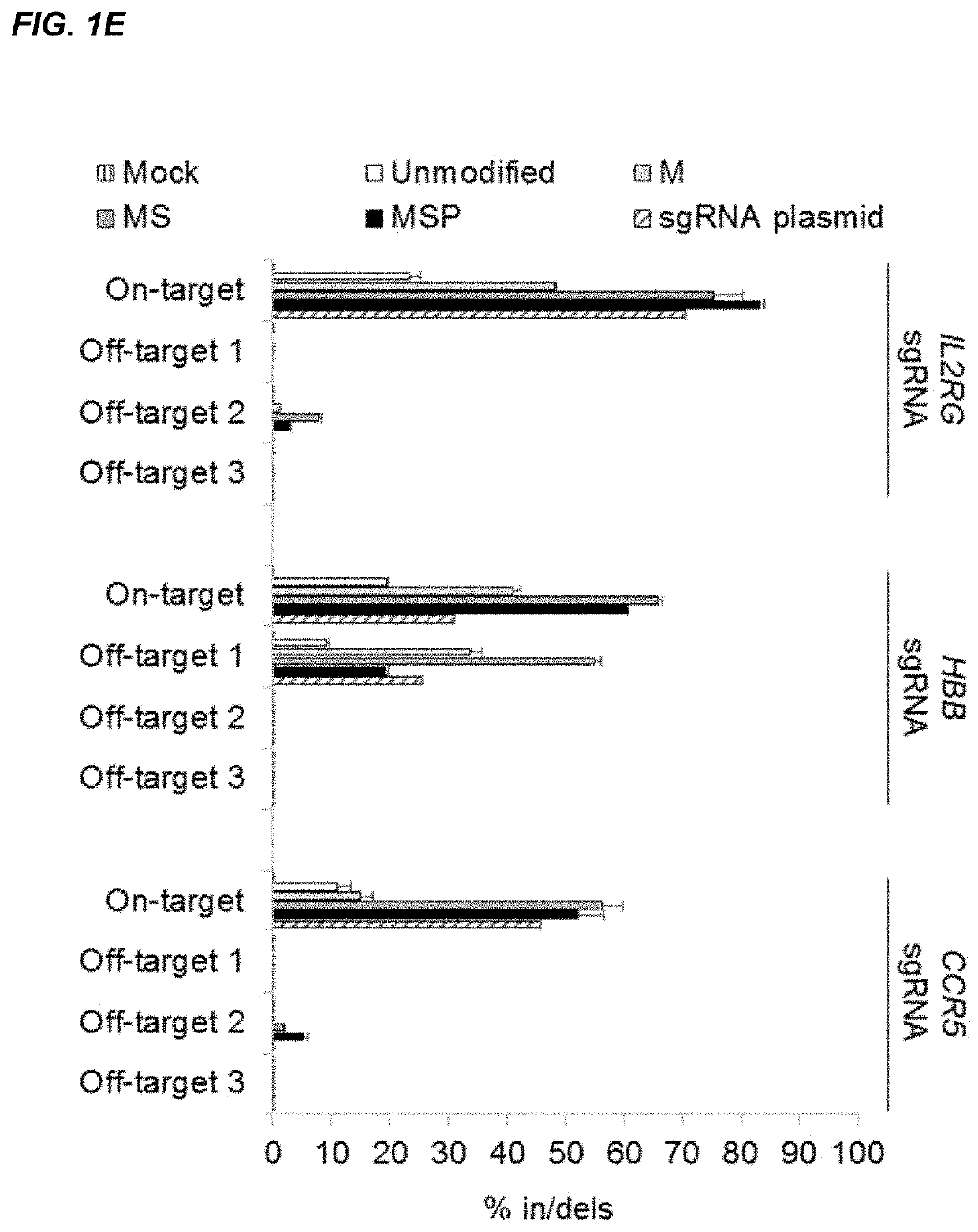Chemically modified guide rnas for crispr/cas-mediated gene regulation
a technology of gene regulation and guide rnas, which is applied in the direction of metabolism disorders, immune disorders, extracellular fluid disorders, etc., can solve the problems of inefficiency of genome editing and modulating gene expression using the crispr/cas system, and achieve the effects of improving the specificity increasing the stability of the modified sgrna, and improving the editing of the target dna
- Summary
- Abstract
- Description
- Claims
- Application Information
AI Technical Summary
Benefits of technology
Problems solved by technology
Method used
Image
Examples
example 1
y Modified Guide RNAs Enhance CRISPR / Cas Genome Editing in Human Primary Cells
[0188]CRISPR / Cas-mediated genome editing relies on guide RNAs that direct site-specific DNA cleavage facilitated by the Cas endonuclease. Here we report on the use of chemically synthesized single guide RNAs (sgRNAs) and show that modification of the sgRNAs by chemical alterations dramatically enhances genome editing in human primary T cells and CD34+ hematopoietic stem and progenitor cells. This approach is a simple and highly effective way to streamline the development of genome editing with the potential to accelerate a wide array of biotechnological and therapeutic applications of the CRISPR / Cas technology.
[0189]Genome editing with engineered nucleases is a breakthrough technology for modifying essentially any genomic sequence of interest (Porteus, M. H. & Carroll, D., Nature biotechnology 23, 967-973 (2005)). This technology exploits engineered nucleases to generate site-specific double-strand breaks ...
example 2
s9-based Homologous Recombination Using Chemically Modified Guide RNAs and a Synthetic Single Strand Oligodeoxynucleotide (ssODN) Template
[0220]Stimulated human primary T cells from three different donors were nucleofected with 10 μg CCR5 sgRNA (unmodified or MS), 15 μg Cas9 mRNA, and 2.81 μg of a 183 nt CCR5 ssODN (with or without phosphorothioate ('PS') linkages between the three terminal nucleotides at both ends). The ssODN contained a central HindIII restriction site not present in the WT CCR5 sequence. Genomic DNA (gDNA) was extracted three days after nucleofections and PCR products spanning the target site (outside the sequence homologous to the ssODN) were generated and digested with HindIII. Restriction fragments were analyzed on a 2% TBE agarose gel and HDR frequencies were calculated.
[0221]FIG. 21 depicts the agarose gels from the HDR experiment. HDR frequency was increased when modified sgRNAs were used. In addition, HDR frequencies were further increased when the ssODN c...
PUM
| Property | Measurement | Unit |
|---|---|---|
| pH | aaaaa | aaaaa |
| pH | aaaaa | aaaaa |
| temperature | aaaaa | aaaaa |
Abstract
Description
Claims
Application Information
 Login to View More
Login to View More - R&D
- Intellectual Property
- Life Sciences
- Materials
- Tech Scout
- Unparalleled Data Quality
- Higher Quality Content
- 60% Fewer Hallucinations
Browse by: Latest US Patents, China's latest patents, Technical Efficacy Thesaurus, Application Domain, Technology Topic, Popular Technical Reports.
© 2025 PatSnap. All rights reserved.Legal|Privacy policy|Modern Slavery Act Transparency Statement|Sitemap|About US| Contact US: help@patsnap.com



